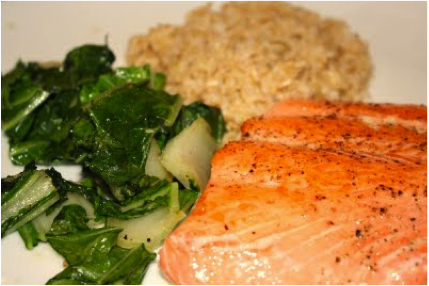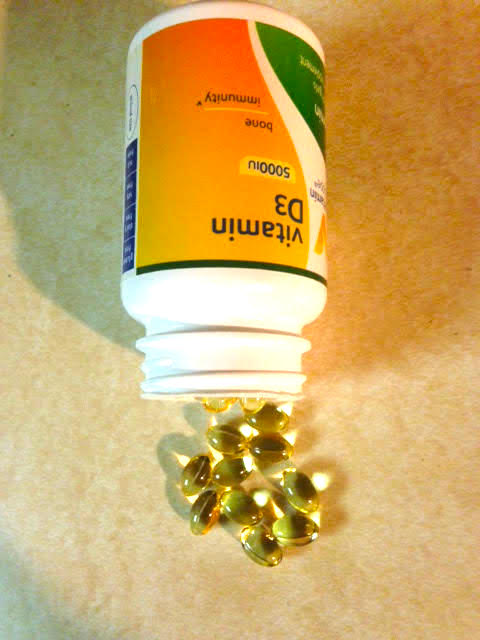 As winter rapidly approaches, those of us up north are seeing fewer days of sunlight and feeling the health consequences. As the sun is the body’s leading source of vitamin D, many folks living above the Sunshine Belt of the United States find themselves deficient in this nutrient and require supplementation for optimal health. Vitamin D deficiency not only affects bone health and immune function, it has also been associated with myriad health conditions, including cancer, cardiovascular disease and cognitive decline, as well as depression, diabetes and autoimmune disease.
As winter rapidly approaches, those of us up north are seeing fewer days of sunlight and feeling the health consequences. As the sun is the body’s leading source of vitamin D, many folks living above the Sunshine Belt of the United States find themselves deficient in this nutrient and require supplementation for optimal health. Vitamin D deficiency not only affects bone health and immune function, it has also been associated with myriad health conditions, including cancer, cardiovascular disease and cognitive decline, as well as depression, diabetes and autoimmune disease.
While many health experts feel the sweeping impact of vitamin D deficiency may be overstated, it is clear that the body needs the right amount to thrive. The fat-soluble nutrient and pro-hormone helps regulate the absorption of calcium and phosphate to build and maintain strong, healthy bones. It enhances muscle strength, has anti-inflammatory properties and boosts immune function.
Vitamin D plays a critical role in activating the body’s immune defenses to react to and fight off serious infection. Sufficient intake of the vitamin triggers the immune system’s T cells into action, effectively detecting and killing invading bacteria and viruses, scientists at the University of Copenhagen discovered in 2010. This is why many medical professionals recommend that people ensure their vitamin D levels are within healthy range during winter to help combat the flu and colds naturally.
Health Conditions Associated With Vitamin D Deficiency
[youtube https://www.youtube.com/watch?v=hiGBVDcbFVk&w=560&h=315]
Vitamin D may also affect when we die. A 2014 study by University of California, San Diego School of Medicine researchers found that people with lower levels of 25-hydroxyvitamin D had a significantly increased risk of premature death than those with a higher concentration of vitamin D in their blood. Of more than a half million subjects studied across 14 countries, with an average age of 55, approximately half the participants were at risk for early death, with blood levels of 30 ng/ml or lower. An estimated 66 percent of all Americans are already that deficient in vitamin D, according to researchers.
Another study from 2014 found that higher levels of vitamin D were associated with better cancer survival rates and longer remissions. Recent studies have observed a correlation between higher levels of vitamin D and breast cancer and bowel cancer survival rates. Low levels of the vitamin may be linked to more aggressive and advanced cases of prostate cancer.
Over the last decade, vitamin D deficiency has also led to a surprising spike in rickets—a bone-weakening disorder—particularly among children the UK. Researchers suspect this resurgence is due to poor diet, an increase in obesity and a general decrease in exposure to sunlight, the best natural source of vitamin D.
Obesity is thought to play a big role in current vitamin D deficiency. Despite the overconsumption of calories, the excess intake of nutrient-deficient processed and junk foods leads to malnutrition. Studies have also led researchers to suspect that obesity suppresses levels of vitamin D. Some scientists suspect that the fat-soluble vitamin may get diverted to fatty tissues, which means less vitamin D reaches the bloodstream. Others believe that size of skin surface area does not expand proportionately to increased weight and volume, leading to less direct sun exposure and, thus, decreased levels of vitamin D.
Sunlight As Main Source of Vitamin D
 Exposure to ultraviolet B (UVB) rays is what allows the body to create the precursors of vitamin D on the skin. These are transported to the liver, where it is converted to 25-hydroxyvitamin D, and to the kidney, where it converts into the physiologically active 1,25-dihydroxyvitamin D, which is spread throughout the body in the bloodstream. The amount of 25-hydroxyvitamin D is measured to determine healthy levels of D in the bloodstream. Sunlight is critical to getting sufficient vitamin D, as natural dietary sources for the nutrient are quite limited—fish-liver oils (like cod liver oil), fatty wild fish (like salmon, halibut, tuna and sardines), liver, egg yolks and mushrooms.
Exposure to ultraviolet B (UVB) rays is what allows the body to create the precursors of vitamin D on the skin. These are transported to the liver, where it is converted to 25-hydroxyvitamin D, and to the kidney, where it converts into the physiologically active 1,25-dihydroxyvitamin D, which is spread throughout the body in the bloodstream. The amount of 25-hydroxyvitamin D is measured to determine healthy levels of D in the bloodstream. Sunlight is critical to getting sufficient vitamin D, as natural dietary sources for the nutrient are quite limited—fish-liver oils (like cod liver oil), fatty wild fish (like salmon, halibut, tuna and sardines), liver, egg yolks and mushrooms.
The nation’s increasingly sedentary lifestyle and fears of skin cancer mean most people spend the vast majority of their lives indoors, blocking the best source for vitamin D—the sun. Unfortunately for those of us living north of 37 degrees latitude—picture a line going from Fresno, Calif. to Springfield, MO to Virginia Beach, Va.—even if we wanted to sunbathe, the sun is very low in the sky from November through March, leaving us UVB-deficient in the fall and winter. With limited sunlight during these months, Frank Lipman, MD, suggests taking enough vitamin D supplements to keep blood levels between 50 and 80ng/ml for a strong and healthy immune system.
The Centers for Disease Control and Prevention estimates that approximately 46 percent of all Americans are vitamin D deficient. Some suggest the rate is closer to 75 percent. Even the Institute of Medicine, which has very conservative recommended intake for vitamin D, estimates that 50 percent of women are not even getting the IOM’s recently lowered recommended amount.
Recommended Dose of Vitamin D
The IOM currently gives a recommended daily allowance (RDA) for vitamin D of 200 to 600 IUs for people up to age 70 to maintain sufficient bone health and normal calcium metabolism in healthy people. The amount of vitamin D varies with age, weigh, percent of body fat, latitude, season, time spent outdoors, skin color and degree of health. People with more pigment in their skin also absorb less sunlight, reducing their ability to produce vitamin D.
Many physicians who treat conditions associated with vitamin D recommend much higher doses, greater than 1,000 IUs. Dr, Lipman, an expert in integrative medicine, offers these vitamin D dosage guidelines:
 If your blood level is above 45ng/ml and for maintenance
If your blood level is above 45ng/ml and for maintenance
I recommend 2,000-4,000 IU daily..If you are older, larger, living in the northern latitudes during the winter, are not getting sun and have dark skin, I recommend the higher maintenance dose.
If your blood level is 35-45 ng/ml,
I recommend you correct it with 5,000 of vitamin D3 a day for 3 months under a doctor’s supervision and then recheck your blood levels.
If your blood level is less than 35 ng/ml,
I recommend you correct it with 10,000 of vitamin D3 a day under a doctor’s supervision and then recheck your blood levels after 3 months. It takes a good 6 months usually to optimize your vitamin D levels if you’re deficient. Once this occurs, you can lower the dose to the maintenance dose of 2,000 – 4,000 IU a day.
While many people who are deficient in vitamin D remain asymptomatic, common symptoms include:
- Joint Pain
- Muscle weakness and pain
- Muscle cramps
- Chronic Fatigue
- Cognitive impairment
- Restless Sleep
- Headaches
- Weight gain
- High blood pressure
- Constipation or diarrhea
- Bladder problems
Vitamin D Test Kit
 To make it easier for individuals to test vitamin D levels and stay on top of their health, The Vitamin D Council released vitamin D test kits for the home just last week. With just a few drops of blood on the spot card provided, tests are sent to the council’s partnering lab Heartland Assays. The lab provides testing for many large academic studies and uses the highly accurate LC-MS/MS technique to determine vitamin D levels. Test results are available within a week or two and can be accessed privately online
To make it easier for individuals to test vitamin D levels and stay on top of their health, The Vitamin D Council released vitamin D test kits for the home just last week. With just a few drops of blood on the spot card provided, tests are sent to the council’s partnering lab Heartland Assays. The lab provides testing for many large academic studies and uses the highly accurate LC-MS/MS technique to determine vitamin D levels. Test results are available within a week or two and can be accessed privately online
An individual test kit is $50, and a 4-pack is $180. Both are available nationwide and can be ordered from their website https://www.vitamindcouncil.org/testkit/.
How much time would you have to spend outside in winter months to get good levels of Vitamin D?
Jessie,
Where we live, due to the limited sunlight in winter months, you literally couldn’t spend enough time outside in winter to get adequate levels of vitamin D.